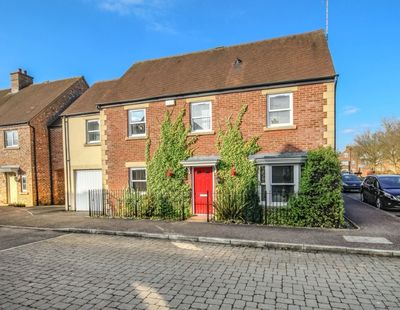The past ten years I have been building the award-winning Doctor Photo image editing and training business with my son, Tom.
I can tell you that learning to take great photos is easier than learning to drive a car. If I can do it, you can too!
What kit do I need?
Tripod
The first thing is to know that you don't need flash for your interiors and flash lighting doesn't help with the majority of exterior photography.
Instead, the essential piece of kit for your interior pics – after the camera and lenses – is a tripod.
Make sure that it's not flimsy. Something like the Manfrotto Compact with joystick head is ideal for the job and new, they’re currently under £50 including VAT.
With one of these, you can use ambient light (that’s all the light that you don’t take with you), and this will give you a much more natural-looking image than flash would.
When flash lighting is badly used it can easily make a white room look like the inside of a gentlemen's toilet - which is somewhere most people won’t want to live!
Flash also puts shadows where they shouldn’t be and gets rid of shadows where they should be: the result often looks bogus unless you have a lot of time to get it right.
SLR Camera
Your choice will be between a digital SLR camera or a compact. The lenses you can attach to SLR cameras show more of any room than a compact camera would and help you to photograph inside tiny bathrooms.
Canon and Nikon are good makes because you can often buy cheaper lenses from third-party makers like Sigma and Tamron.
Cameras by other makers tend to have smaller ranges of third-party lenses available, which means you’re stuck with own-make lenses and those tend to be more expensive.
Canon's consumer models are less complicated than Nikon's, so they're generally easier to use. Also, the cheapest Nikon SLRs lack the functionality that’s necessary to get the very best interiors without flash.
You don’t need to have the latest model camera and there are UK sites dedicated to selling second-hand kit.
Make sure that whatever you buy has a flip-screen. One of those will increase your productivity if you do and make it harder for you to squeeze into tight corners if you don't.
Lenses
Interiors
Another Canon advantage is that you can buy a brand new 10-18 lens for under £200 including VAT.
Whereas most own-make lenses are dearer than the third-party options, this brilliant lens bucks that trend and will save you around £100 over the price of similar lenses from other makes.
If you have a DSLR and don’t fancy the Canon 10-18, wide-angle lenses for all your interiors need to be in the 10-20/22/24 range.
Sigma offers some excellent alternative third-party options for Nikons and Canons. Sigma also sells an 8-16 lens which shows an even greater extent of any room but at a higher price.
Exteriors
For most of your outside shots, you will need a longer zoom lens – most cameras come with an 18-55 so-called kit lens, and one of those will be a great starting point.
Lifestyle
Lifestyle is the style of photography that's gaining traction as more and more agents are coming to understand that artful images can get their properties noticed.
After all, you’re in the property marketing and sales business, not just property sales. The job is to make your properties stand out from its competitors. Lifestyle is fun to do and it works.
For lifestyle, the bigger the aperture that you can open the lens to, the better you can blur the background to make the subject stand out.
So, an ideal lens for this would be the Sigma 17-50. You could also use this lens for your exterior shots if you like and you’ll likely find the results will look crisper.
Nice-to-haves
Cable release – having one of these will mean that you won’t have to touch the camera when you release the shutter – your images will usually look sharper. Third-party makes are fine. Make sure you buy one that fits your camera – the connections vary a lot. The likely cost is around £10-15.
Skylight or UV filers - these attach to your lens and provide the glass with protection against knocks, dust and scratches. These filters cost around £10-20, but they're much cheaper than having to replace a scratched lens. Look at the front of the lens for the filter size – this may be 67mm for many kit lenses.
Polarising filters – attach one of these to your exterior lens and you can reduce reflections and glare off glass and water, and you can make your blue skies bluer. Expect the cost to be in the region of £10-30 depending on quality and brand.
*John Durrant is a pro-photographer, property photography trainer and MD of the award-winning Doctor Photo.
If you need any property photography advice, email him at johndurrant@doctor-photo.co.uk.











.png)


.png)



Join the conversation
Be the first to comment (please use the comment box below)
Please login to comment